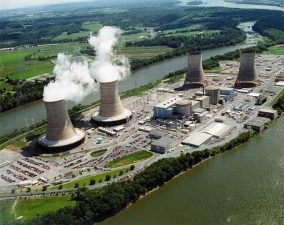 As Turkey moves to build its first nuclear power plant, there are troubling signs that the country’s nuclear energy institute is not monitoring nuclear hazards carefully.
As Turkey moves to build its first nuclear power plant, there are troubling signs that the country’s nuclear energy institute is not monitoring nuclear hazards carefully.
An abandoned lead factory yard used as a playground by local children in Turkey’s western İzmir Province contains high levels of radiation, according to Greenpeace Turkey, yet the Turkish Nuclear Energy Institute (TAEK) said the source of the radiation could not be found and pronounced the area safe.
Raising doubts
After high radiation levels were detected at the old factory yard early last week, a deputy from Turkey’s main opposition party submitted a parliament commission request that the area be investigated. TAEK sent in a team to seek the source of the radioactivity.
The TAEK team’s report made no mention of some dangerous materials known to be sequestered in the area, according to Greenpeace Climate and Energy campaign leader Cenk Levi. These include Isotope Europium 152, a variant that doesn’t occur naturally and poses a special risk to pregnant women.
Instead, the TAEK report simply said the radiation levels did not seriously threaten the environment, adding that the source of the radioactivity could not be traced. Children continue to play in the area, since it is unfenced.
TAEK had never conducted a thorough investigation of the factory in the past, according to Greenpeace campaign leader Levi, even though radioactive leakage was always possible.
Adding to worries about nuclear energy
“Aside from long dispatches on the topic of how to dispose of the radioactive materials found in İzmir over the past five years, TAEK has done nothing. Unfortunately, it’s becoming clear that they won’t be able to keep Turkey’s first nuclear plant secure either,” said Levi.
Although countries around the world have grown more wary of nuclear power since the catastrophic meltdown at the Fukushima reactor in Japan last year, Turkey plowed ahead with plans to develop its first nuclear power plant.
The government’s enthusiasm for nuclear energy seems misplaced, given the disease and agricultural loss that Turkey suffered after the Chernobyl meltdown of 1986.
If Turkey develops a nuclear plant, however, the country’s ability to effectively monitor and treat radioactive leakage will be critical. Lives, as well as the health of Turkey’s environment, will hinge on TAEK’s ability to handle radiation threats.
The way TAEK has responded to the high radiation levels at this old factory in İzmir does not bode well.
:: Bianet
Read more about nuclear energy in Turkey:
Plans For Turkey’s First Nuclear Plant Revealed
Despite Japan, Turkey Goes Ahead With Nuclear Reactors
Post-Chernobyl Agriculture in Turkey: A Sign of What’s in Store for Japan?
Image via TRT Haber




Comments are closed.